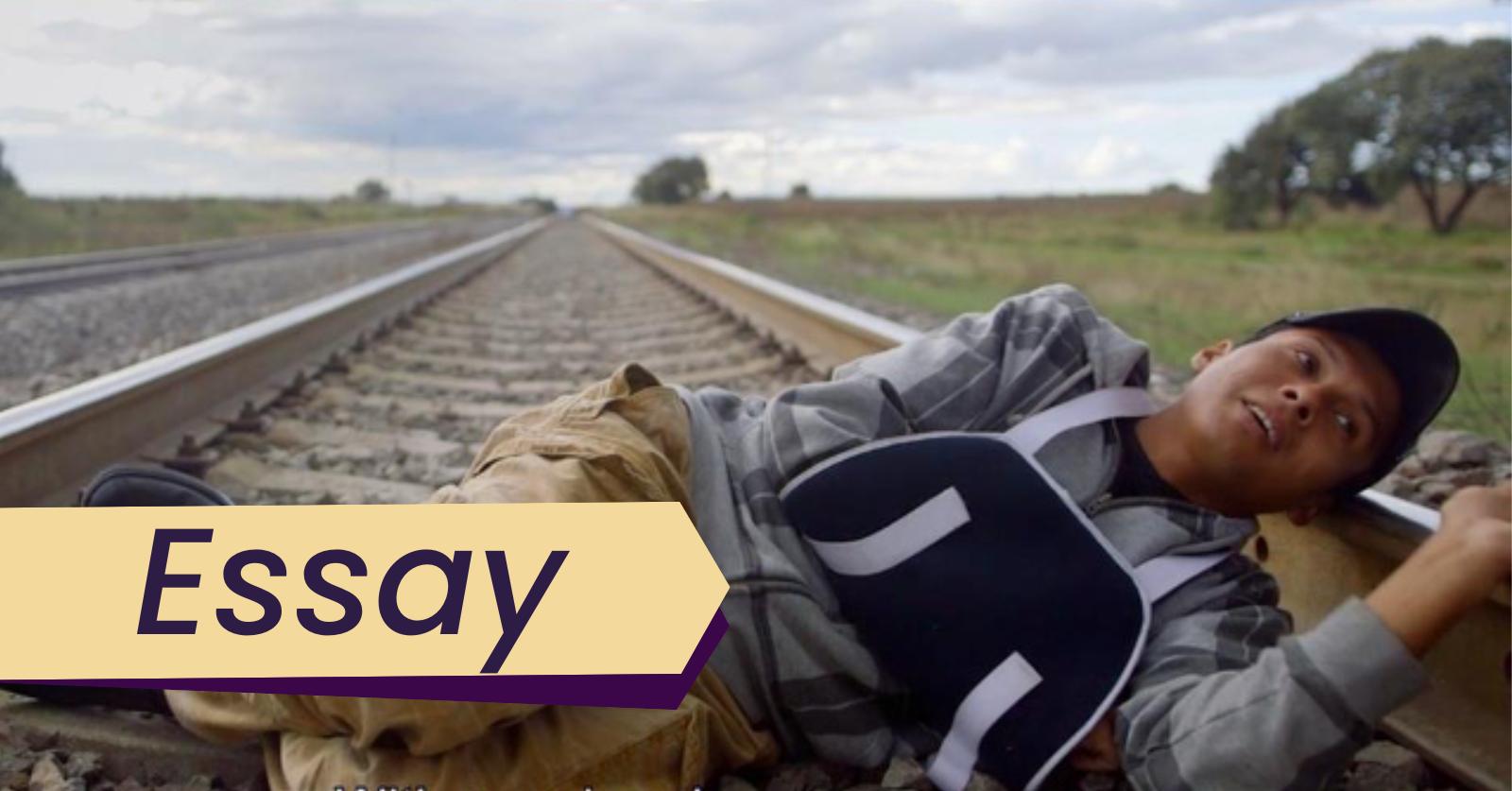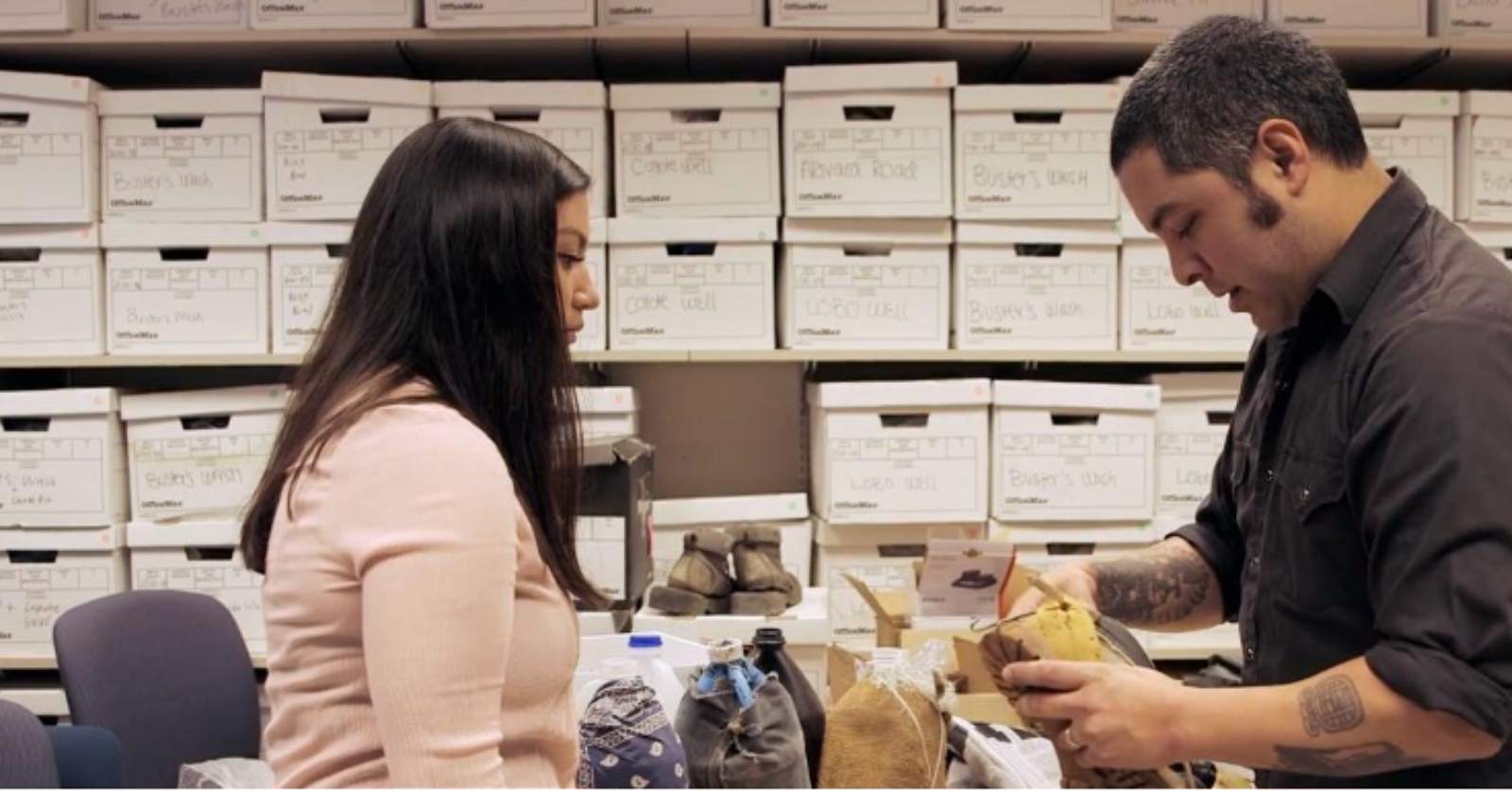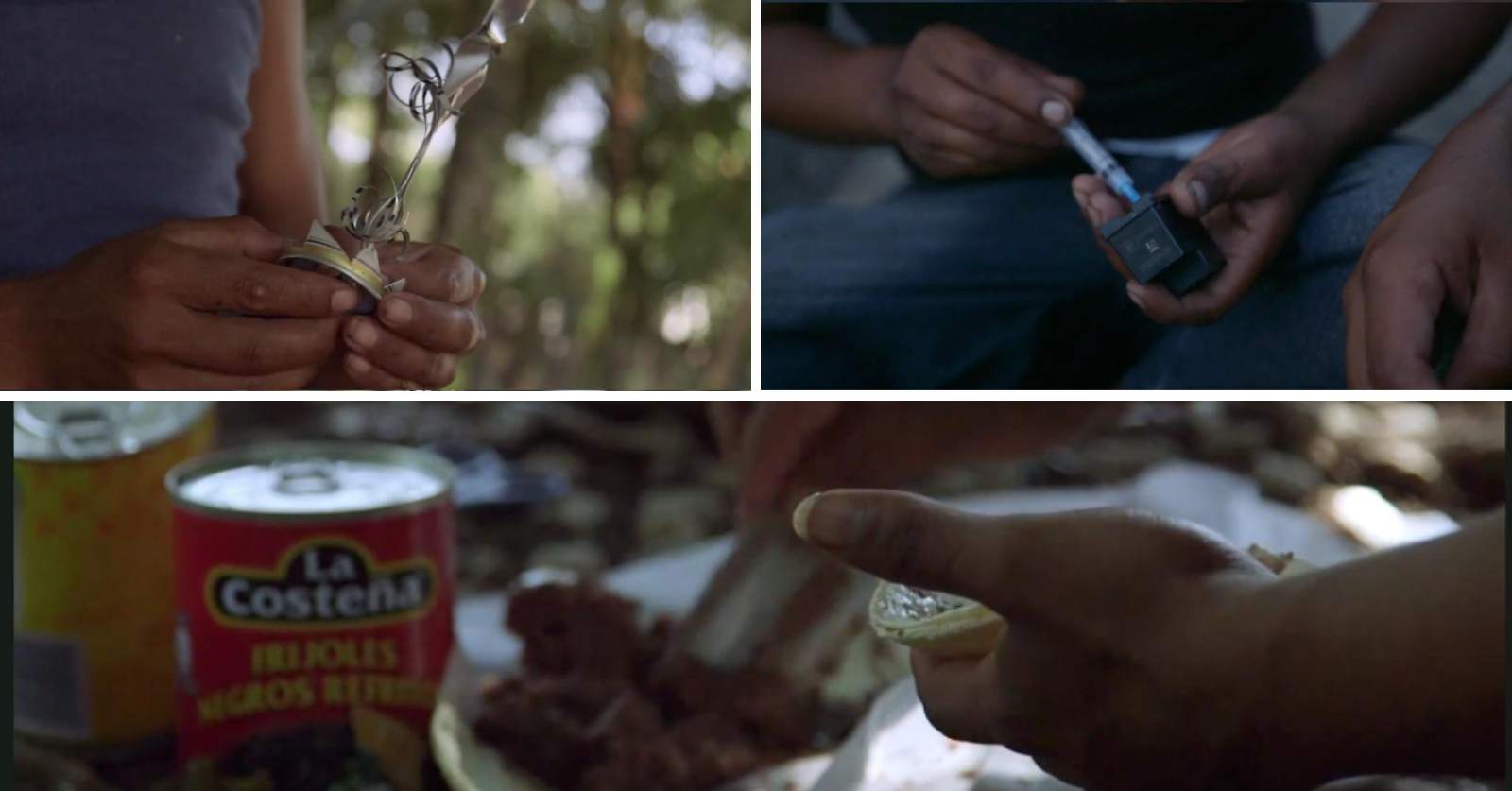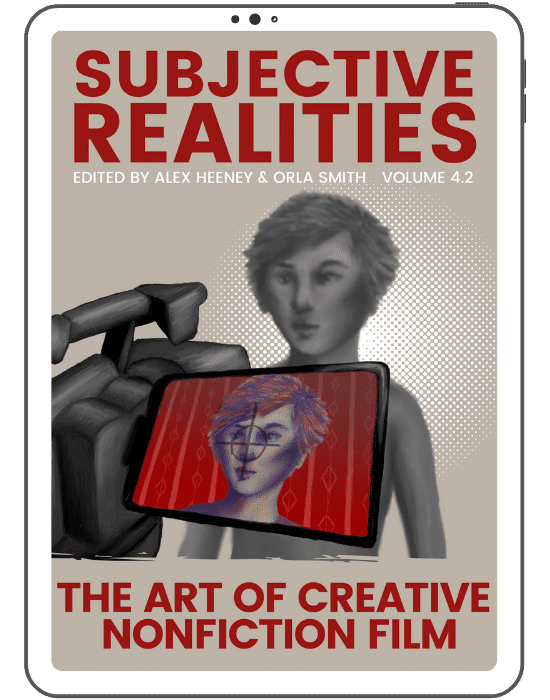Raúl Paz-Pastrana’s 2019 documentary film Border South takes a De Certeauian view of migrants as ingeniously capable, tenacious, and agentive subjects whose minute, everyday actions allow them to confront the powers that be and take advantage of situations.
Discover more works of creative nonfiction documentary with our ebook Subjective Realities: The art of creative nonfiction film, available here.

Discover one film you didn’t know you needed:
Not in the zeitgeist. Not pushed by streamers.
But still easy to find — and worth sitting with.
And a guide to help you do just that.
In the last thirty years, numerous documentaries and fiction films have tackled the movement of peoples through Central America and Mexico has yielded numerous documentaries and fiction films — most are politically engaged, some are nuanced, very few are excellent. Since the creation of NAFTA in 1994, along with the US government’s implementation of ‘prevention through deterrence’ and the subsequent ‘borderization’ of the region, migration along the U.S.-Mexico border has been a hot topic for filmmakers. Yet films about migration often recapitulate a colonialist gaze, casting migrants as overly docile, diminished, and servile, rather than active. Sometimes, the films feel like little more than an exercise in cultural slumming.
By contrast, Raúl O. Paz-Pastrana’s 2019 documentary Border South is a high-water mark for approaching the issue in that it explicitly de-centres received knowledge about migrant lives. Border South portrays migrants as ingeniously capable, tenacious, and agentive subjects whose minute, everyday actions allow them to confront the powers that be and take advantage of situations.
Engaging with the ethical, experiential, and philosophical concerns of migrants
Border South engages with questions at the centre of migration — the larger ethical, experiential, and philosophical concerns of how and why individuals traverse borders. As such, the film is in conversation with the philosophy of migration developed by scholars like Donatella Di Cesare, David Miller, and José Jorge Mendoza, who have recently interrogated how migrants inventively manoeuvre legal and national frameworks. It is also in conversation with other academics, who have followed in the footsteps of French philosopher Michel de Certeau, to examine migratory practices.
The film proposes that migrants are not merely fodder for research projects. Rather, individuals on the move harness sophisticated life skills that serve to contest those in power. In this sense, Paz-Pastrana’s film follows De Certeau’s thought by underscoring the uniqueness and potency of hitherto marginalized voices. Paz-Pastrana finds, via his documentary on migrant lives, examples of De Certeauian, day-to-day resistance.
Michel de Certeau’s work provides a lens for looking at
As someone very cognizant of the dire straits of downtrodden peoples — writing about politics, Indigenous movements, and what groups get redacted from history — Michel de Certeau (1925-1986) is an apt interlocutor for issues related to migration. He was a strikingly eclectic academic whose work engaged various disciplines — psychology, philosophy, and theology.
Although he assumed vastly different roles in his professional life saw him assume vastly different roles (he was both an historian and a Jesuit priest), De Certeau is best known for his 1974 text The Practice of Everyday Life. There, he articulates a vision of subjectivity that pinpoints opportunities for emancipation in the minute, quotidian gestures of the everyday subject. He characterizes the individuals as possessing slight but significant chances to oppose the confines of society. As he describes it, humanity can express themselves in the liminal spaces of power: “It is all the more urgent to discover how an entire society resists being reduced to it, what popular procedures (also minuscule and quotidian) manipulate the mechanisms of discipline and conform to them only in order to evade them.”
Paz-Pastrana’s description of his characters reflects De Certeauian principles
Paz-Pastrana himself pointed out the De Certeauian character of his film Border South. In a Picture This Post interview, the director explained how he wanted to represent undocumented migrants not only as “victims,” but also, as “hustlers; they are funny, kind, and smart enough to survive cartels, local criminals, corrupt police, nature, and more.” That is, Border South cleverly shows migrants as shrewd participants in society, capable of confronting an unjust system via everyday interventions. The ingenuity of migrants is central to Paz-Pastrana’s film.
The three partitions of Border South
Border South has three partitions — ‘The Survivor’, ‘The Anthropologist’, and ‘The Trail’— signalling the film’s three protagonists. One of these protagonists, Gustavo, is a Nicaraguan migrant who becomes the victim of police violence while travelling through Mexico, usually via the Bestia. A second protagonist, Dr Jason De León, is an academic and MacArthur Fellow working to archive evidence surrounding the crisis in the borderlands. We see De León work on his Undocumented Migration Project, which aims to archive personal articles discarded by migrants traversing the Sonoran Desert.
The film’s final ‘protagonist,’ strangely enough, is the treacherous route migrants take to traverse Mexico. That is, not unlike the freight train — often personified as La Bestia, and which carries many Latin Americans north through Mexico — Paz-Pastrana also casts the journey itself as terribly alive. These are the dramatis personae of an ongoing tragedy that see fragments of migrant lives intercalated with the travails of anthropologist Jason De León.

Thus, Paz-Pastrana shows academic De León collecting data for his Undocumented Migration Project, warning migrants about the dangers of Sonora Desert, and visiting a dejected mother whose son went missing while migrating from Ecuador to the U.S. In this way, the documentary forwards two distinct types of knowledge. One, associated with anthropological research realized by De León and recognized by the academy and society at large; another, the street-savvy know-how that migrants acquire on the run.
Diverse responses to the migration issue
The dual plotlines illustrate the diversity of responses to the migration issue, underscoring the film’s De Certeauian message: wisdom, adeptness, and creativity come in many forms, some of them unrecognized by the powers that be, yet still present, active, and capable of exerting change. They depict two intellectual journeys: that of the anthropologist, De León, as he looks for clues of missing migrants, and that of countless migrants themselves, as they carefully trace their way northward. By bookending the film with Gustavo’s story, Pastrana highlights Gustavo’s story: the lived, human face of migration rather than the academic perspective.
Deeply De Certeauian in tone is the film’s way of highlighting moments of tactical consumption. As De Certeau proposes in The Practice, migrants are “unrecognized producers, poets of their own affairs, trailblazers in the jungles of functionalist rationality, consumers produce something resembling the ‘lignes d’erre’ described by Deligny.” When the documentary opens, Gustavo sits in the middle of the train tracks, the camera positioned toward the horizon. Gustavo explains how, during his journey, he lays down on the rails as if it were a pillow (as seen in fig. 1). Seemingly amused by his own hardscrabble cleverness, he explains how resting his head on the steel beams allows him to hear approaching trains. Effectively, Gustavo employs this most dangerous of modes of transportation, the train, to his own advantage.
Migrant ingenuity in the ‘The Trail’ section of the film Border South

The ‘Trail’ section of the film is replete with examples of migrant ingenuity — especially vis-à-vis power structures. Often, migrant invention is a product of necessity — their well-being is at stake. Thus, Pastrana shows groups of migrants resting during their journey north, huddled around an open can of beans and using the can’s aluminum lid to spread the brown legumes atop tortillas (fig. 5). Further down the line, migrants make coffee by boiling water in an empty two-litre bottle of Coca-Cola. In yet another scene, Jason de León, assessing the archive of lost or discarded articles in the Sonoran Desert, shows how a migrant improvised a way to fix their shoes with steel wire (fig. 2). The contraption is clever, if unconvincing.
At other times, migrants evade systems of power to show their creative side and thus, express their humanity. Thus, a group of travelling men, cloaked by night, give themselves tattoos with a syringe, dipped into the ink of a printer cartridge (fig. 4). One man asks, “This is illegal, right?” to which another answers “Well, in my country it is.” Yet another young migrant along the Bestia route who sculpts old beer cans into elaborate statuettes, and is thus able to feign being a street artisan (fig. 3). Although the sculptor’s invented professional position may not seem to carry more social capital, he deems it a step up from being a migrant.
Tight closeups of hands signal the migrants’ ingenuity and tactical practice
De Certeau would define such ingenious activities as ‘tactics’ — guerrilla manoeuvres that marginalized figures activate to briefly upend power structures. They are ‘an art of the weak’. Tellingly, for both Pastrana and De Certeau, individuals, in order to turn the tables on authorities, often use consumer goods: ‘tactical trajectories which, according to their own criteria, select fragments taken from the vast ensembles of production to compose new stories with them’.
In Pastrana’s film, like for De Certeau, these tactical activities are performed alongside consumer goods: ‘tactical trajectories which, according to their own criteria, select fragments taken from the vast ensembles of production to compose new stories with them’. De Certeau would define such activities as ‘tactics’ — guerrilla manoeuvres that marginalized figures activate. They are ‘an art of the weak’.
The film is replete with tight closeups of hands and people doing work. Pastraña chooses not to linger from afar making a crass type of poverty porn. Rather, he pulls us close to the tactics that migrants use to make their way in the world. In true vérité style, the director himself is never heard or seen. When discussing their travel north and their crafts, migrants are allowed to meander in their conversations. Finally, when individuals do fall silent, the camera doesn’t stop rolling. In this way, not only the content of the film but also, its form grants migrants power. Rather than shooting individuals from below or above, the camera moves to meet migrants where they work, whether stooping, kneeling or lying on the ground.
Gustavo uses the legal system to his advantage in Border South
The most profound strike against the powers that be appropriately revolves around the plotline of the Nicaraguan migrant, Gustavo, who, taking advantage of the legal system, garners a humanitarian visa after being wrongfully shot by Mexican police. Gustavo employs the codified power structure to improve his lot. Rather than allowing himself to be a victim, Gustavo turns might on its head by using legal knowledge to his advantage against state forces. Gustavo’s ploy is an almost casebook example of what De Certeau explains as a “strategy,” which he defines as a “calculation (or manipulation) of power relationships that becomes possible as soon as a subject with will and power (a business, an army, a city, a scientific institution) can be isolated.”
Indigenous issues at the border and De Certeau’s writing
Just as De Certeau’s texts that explicitly takes on issues surrounding Indigenous peoples, when “possibilities for a socio-political renewal were appearing to Western societies right on their borders, where they have been the most dominating,” Paz-Pastanra’s film attends to Indigenous issues given that migration to the U.S. at the southern border is largely a story of such communities.
Speaking directly to the possibilities for resistance, the French sociologist notes that Indigenous Peoples often “used the laws, practices, and representations that were imposed on them by forces or by fascination to ends other than other of their conquerors; they made something else out of them: they subverted them from within—not by rejecting them or by transforming them (though that occurred as well), but by many different ways of using them in the service of rules, customs or convictions foreign to the colonisation which they could not escape.”
The individuals making the treacherous journey north that Paz-Pastrana films are infinitely adept at using the rules of the game to their own advantage: the tools of the master can be used against him.
Avoiding casting migrants as political pawns
While US politicians, desperate to illustrate their nationalist bona fides before the next election cycle, cast migrants into increasingly dangerous situations, we must hold ourselves accountable. Although we rightfully criticize policies that willfully put migrant lives in harm’s way, we should avoid casting migrants simply as ‘political pawns’. Thus, Border South deserves a second viewing. Paz-Pastrana’s film reminds us that, no matter how marginalized individuals may be, they are still immensely capable, everyday tacticians.
Related reading/listening to the film Border South and migration
More documentary films about migration. Our ebook Subjective realities: The Art of Creative Nonfiction Film features interviews with the filmmakers of Flee and Miguel’s War. Both films are character portraits about people who had no choice but to flee their home countries as migrants. Gianfranco Rosi’s Fire at Sea addresses the migrant crisis in Lampedusa, Italy. Read our in-depth interview with Rosi on the film and his filmmaking approach. The interview is available in our ebook In Their Own Words: Documentary Masters Vol. 1.
More fiction films about migration: Agnieszka Holland’s Green Border addresses the current migrant crisis at the Polish-Belarusian border. Listen to our podcast interview with Holland on Green Border.
Explore more documentaries like Border South with our ebook Subjective Realities: The Art of Creative Nonfiction Film

Discover how ‘creative nonfiction’ documentaries, otherwise known as hybrid or experimental documentaries, push the boundaries of what we traditionally conceive of documentary to be.
By focusing on landmark films from the last ten years, the book uncovers the myriad approaches to nonfiction film, from animated documentaries (e.g. Flee) to personal stories (e.g. Dick Johnson Is Dead).
Get inside the heads of the filmmakers behind these films and discover the kinds of questions filmmakers are asking about the possibilities of nonfiction film.

